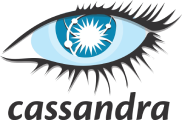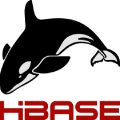Everything about NoSQL Systems – Types, Benefits, and Real-World Uses
Whether you’re building a lightweight app or scaling a distributed platform, data storage choices matter. NoSQL has become a powerful alternative to traditional relational databases, but its ecosystem is broad and often misunderstood. This guide will help you cut through the noise.
What Is NoSQL?
At its core, NoSQL refers to “non-relational” or “not only SQL” databases—data storage systems that don’t rely on the traditional row-and-column table format of relational databases. Instead, they offer flexible models like documents, key-value pairs, graphs, or wide columns, depending on how your data is structured and accessed.
The goal of NoSQL is not to replace SQL entirely. Rather, it addresses specific limitations in relational systems, especially when dealing with unstructured data, large volumes, or distributed architectures. This makes NoSQL a key part of modern tech stacks, especially for applications involving real-time data, microservices, big data, and global-scale services.
SQL vs. NoSQL – Key Differences
While both systems store and retrieve data, SQL and NoSQL serve different needs. Here’s how they compare across the most important dimensions:

Data Structure
SQL databases use a fixed schema with tables, rows, and columns. The structure must be defined in advance, and every record follows the same format.
NoSQL databases are schema-flexible. Data can be stored as JSON documents, key-value pairs, or graphs, allowing each entry to look different.

Scalability
SQL databases are typically scaled vertically, which means adding more power to a single server (CPU, RAM, etc.). NoSQL databases are designed for horizontal scaling—distributing data across many servers to handle high traffic and large datasets.

Query Language
Structured Query Language (SQL) is used in SQL databases to interact with data.
Variants on NoSQL databases depend on the type: MongoDB can allow a SQL-like query language to be submitted and also executes entire queries from the shell, while Cassandra utilises its built-in CQL (Cassandra Query Language).

Transactions
SQL systems provide strong ACID compliance (Atomicity, Consistency, Isolation, Durability), ensuring strict data reliability.
NoSQL systems vary: some support ACID at a document level, but many focus on performance and availability, sometimes offering only eventual consistency.
Types of NoSQL Databases
NoSQL isn’t one technology—it’s a category. Here are the main types:

Document Databases
Store data as JSON or BSON documents, ideal for semi-structured data and flexible schemas. These are great for content management, catalogues, and applications with fast-evolving data models.
- Popular tools: MongoDB, CouchDB
- Use case: Product data, blogs, user profiles

Key-Value Stores
These are the simplest NoSQL databases: a giant hash table where each key maps to a value. Extremely fast and highly scalable, often used in caching and session management.
- Popular tools: Redis, Riak, DynamoDB (in key-value mode)
- Use case: Session storage, user preferences, shopping carts

Wide-Column Stores
These are utilised in distributed systems at a large scale and offer rows and columns in a table with some type of difference in the columns associated with each row, not all the columns. Like a flexible spreadsheet.
- Popular tools: Apache Cassandra, HBase
- Use case: Time-series data, IoT, analytics workloads

Graph Databases
These focus on relationships between data. Nodes represent entities, and edges represent relationships—ideal for social networks, fraud detection, and recommendation engines.
- Popular tools: Neo4j, ArangoDB, Amazon Neptune
- Use case: Friend-of-a-friend queries, supply chain management
Short History of The Rise of NoSQL
NoSQL isn’t new—it dates back to the early 2000s when developers at companies like Google and Amazon started hitting the limits of traditional SQL systems.
Relational databases were never designed to handle the scale and complexity of global services, real-time data, or rapidly changing application schemas. Systems like Bigtable (Google) and Dynamo (Amazon) paved the way for what would later become open-source and commercial NoSQL platforms.
The term “NoSQL” itself gained traction around 2009, reflecting a broader movement. Startups and web companies were quick to adopt these systems, followed by enterprises facing big data and digital transformation challenges.
When to Use NoSQL vs. SQL
There’s no single best option—just the right one for your specific needs. Below are key decision points to help you determine whether a SQL or NoSQL database is the better fit.

Complex Queries and Joins
If your application needs to run multi-table joins, complex filters, or nested subqueries, SQL is the stronger choice. NoSQL databases generally avoid joins to maintain speed and scalability.

Fixed Schema and Data Integrity
SQL works best when your data model is well-defined and unlikely to change. It enforces constraints and relationships, making it ideal for systems where structure and integrity are essential.

Rapid Development with Flexible Data
NoSQL supports agile development with dynamic or loosely structured data. If your schema changes often—or doesn’t exist at all—document or key-value stores allow for faster iteration without costly migrations.

High Write Volume or Throughput
If you’re logging millions of events, capturing sensor data, or handling frequent updates at scale, NoSQL databases like Cassandra or DynamoDB are built to handle this kind of load efficiently.
The CAP Theorem
The CAP Theorem is a foundational idea in distributed systems, especially relevant when choosing a NoSQL database. It states that you can only guarantee two out of three properties at any one time:
- Consistency – Every read receives the most recent write.
- Availability – Every request receives a response, even if it’s not the latest data.
- Partition Tolerance – The system continues to operate even if parts of the network fail or become unreachable.
Most NoSQL databases make different trade-offs depending on their design goals. Here’s how a few well-known systems align with the CAP model:

MongoDB
Prioritises Availability and Partition Tolerance.
MongoDB is designed for high availability and scalability. In the event of a network partition, it continues serving data, though consistency may be relaxed temporarily.

Cassandra
Also emphasises Availability and Partition Tolerance.
Cassandra is optimised for high write throughput and a distributed architecture. It accepts writes even when parts of the system are unavailable and resolves conflicts later.

HBase
Focuses on Consistency and Partition Tolerance.
HBase sacrifices availability in the event of a partition. It’s commonly used in Hadoop ecosystems where strong consistency is more critical than uptime during failures.

Traditional SQL Databases
Usually, they prioritise consistency and availability over partition tolerance since it often happens that the partitioning is a rarity.
It will serve best in environments where network partitions are unlikely or irrelevant, just as in a centralised or single-node system.
How to Use CAP in Practice
Most modern applications experience network partitions at some point, especially in distributed or cloud-based systems. That’s why Partition Tolerance is usually non-negotiable—meaning you’re always choosing between consistency and availability.
If your system must never serve stale data (like in banking or healthcare), consistency is your priority. If your system must always respond quickly, even during outages (like social media or e-commerce), availability might come first.
For interactive content, consider adding a slider or toggle to let users pick any two guarantees and discover which database types support that configuration.
Understanding CAP helps teams design systems that respond gracefully to failure, without sacrificing core user or business needs.
Final Thoughts – Why NoSQL Matters Today
NoSQL isn’t a fad or a replacement for relational databases. It’s a toolset that reflects how modern applications are built: distributed, fast, flexible, and often messy. As data becomes more varied and systems more global, NoSQL provides scalable, reliable options for developers and architects.
That said, NoSQL comes with trade-offs. It’s not a silver bullet, and choosing the right type of database (or combination) requires understanding your data and your system’s needs.
For most modern teams, a hybrid model is the norm—SQL, where structure and integrity matter, NoSQL, where speed and scale rule.
